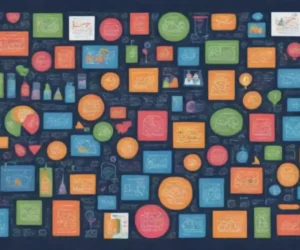
Cross-Platform Machine Learning Tools for Virtual Assistant Development

Introduction
The rise of virtual assistants has transformed the way individuals interact with technology, emphasizing the need for sophisticated systems that can understand and respond to human inputs. These assistants are now embedded in various devices, ranging from smartphones and smart speakers to automobiles and embedded systems. The demand for virtual assistants has intensified with advancements in natural language processing (NLP), computer vision, and other machine learning domains, fostering innovation and new applications across multiple sectors. However, the challenge lies in creating intelligent, efficient, and user-friendly virtual assistants that operate seamlessly across diverse platforms.
In this article, we will delve into several cross-platform machine learning tools that play a pivotal role in the development of virtual assistants. We will explore their features, functionalities, and how they facilitate the development process for developers aiming to create state-of-the-art virtual assistants. From framework choices to deployment strategies, we will cover all the essential aspects that can empower developers to streamline their workflows while ensuring consistency and performance across various platforms.
Popular Cross-Platform Machine Learning Tools
1. TensorFlow Lite
TensorFlow Lite is a lightweight version of the TensorFlow framework specifically designed for mobile and embedded devices. TensorFlow has gained immense popularity in the machine learning community due to its flexibility and capability to support a wide range of tasks. TensorFlow Lite enables developers to run machine learning models efficiently on edge devices, making it a favored choice for virtual assistant development.
The major advantage of TensorFlow Lite is its ability to convert models trained in TensorFlow into a format optimized for mobile devices, such as Android and iOS. Through various optimization techniques, like quantization and pruning, TensorFlow Lite reduces the model size and increases inference speeds without severely compromising accuracy. This is particularly critical for virtual assistants that require real-time responses while conserving device resources.
Moreover, TensorFlow Lite provides pre-trained models and allows for custom model integrations, making it easier for developers to implement functionalities like voice recognition, image classification, or even sentiment analysis. If a virtual assistant needs to understand commands and user sentiment, TensorFlow Lite serves as an ideal tool for building those capabilities with high efficiency and speed.
2. Microsoft Bot Framework
The Microsoft Bot Framework provides a structured way to build chatbots and virtual assistants across various platforms such as web, mobile, and messaging applications. It includes tools, SDKs, and services that allow developers to create intelligent bots using natural language understanding (NLU) and machine learning.
One of the unique features of the Microsoft Bot Framework is its Bot Connector service that allows developers to connect their bots with popular messaging platforms like Microsoft Teams, Facebook Messenger, and Slack. This eliminates the need to code a separate logic for each platform, thus saving time and ensuring consistency in responses. With the support for cross-platform integration, developers can deliver immersive experiences regardless of where their users prefer to engage.
Additionally, the Bot Framework integrates seamlessly with Azure Cognitive Services, which add advanced AI capabilities, including speech recognition, language translation, and image processing. Such features empower developers to build sophisticated assistants capable of processing and understanding diverse types of user inputs. The open-source aspect of the Bot Framework also encourages a thriving community where developers can share ideas and reusable components.
3. Rasa
Rasa is an open-source framework that focuses on building contextual AI assistants, offering a robust platform for dialogue-driven applications. Its strength lies in its ability to help developers design a highly customizable conversation flow, making it easier to accommodate complex user intents and provide precise responses.
One of the standout qualities of Rasa is its NLP capabilities. Rasa allows developers to train and refine their own models tailored to their specific needs and target audiences. By using Rasa NLU, developers can easily perform intent classification and entity recognition, essential components for understanding user queries. This can lead to virtual assistants that not only respond accurately but also learn from interactions, enhancing user engagement over time.
Moreover, Rasa provides tools for testing and evaluating models, allowing developers to monitor performance and refine the assistant’s functionality based on user feedback. It offers easy integrations with communication channels, enabling deployment across different platforms, while still maintaining the power of custom machine learning capabilities. The flexibility Rasa provides makes it an excellent choice for developing personalized virtual assistants aligning with unique business goals.
Additional Frameworks to Consider
4. IBM Watson Assistant
IBM Watson Assistant is a comprehensive AI service that allows developers to create conversational interfaces for various applications. This tool differentiates itself by combining structured data and machine learning expertise to understand user intents effectively. Its visual dialog editor provides a user-friendly interface for developing, testing, and refining conversational flows.
The Watson Assistant's pre-trained models and machine learning capabilities allow developers to build powerful virtual assistants without needing extensive data sets or deep ML expertise. This means that even small businesses or independent developers serious about making an impact can easily leverage Watson's tools to enhance their applications. It can integrate with popular messaging platforms, websites, and mobile applications, ensuring that the assistants are accessible anywhere.
Another notable feature is the ability to analyze conversational data through IBM Watson’s natural language processing capabilities. This insight empowers developers to optimize how their virtual assistants interact with users, creating a more engaging and intuitive experience.
5. Dialogflow
Dialogflow, owned by Google, focuses on building conversational interfaces for voice and text-based input. It supports multiple languages and channels, allowing developers to craft engaging experiences across various devices and platforms. One of the notable features of Dialogflow is its ability to leverage Google Cloud's ML models, offering advanced insights and recommendations.
The user interface of Dialogflow simplifies the process of designing conversation flows, managing intents, and defining entities. This streamlined approach helps developers focus on crafting effective communication rather than micromanaging the underlying ML technologies. Additionally, Dialogflow provides integration with popular platforms like Google Assistant, Facebook Messenger, and webhooks, enabling developers to deploy their virtual assistants across different channels effortlessly.
Furthermore, Dialogflow features prebuilt agents, which can be customized to cater to specific industries or use cases. This feature significantly speeds up the development time, allowing businesses to get their virtual assistants up and running in a short period while ensuring functionality aligned with industry standards.
Conclusion

Cross-platform machine learning tools are instrumental in the development of effective and responsive virtual assistants tailored to meet user needs across different platforms. Each tool discussed—from TensorFlow Lite to Dialogflow—offers unique advantages that cater to a variety of use cases, developer expertise, and business objectives. The choice of the right tool largely depends on the specific requirements and the integrations needed for the virtual assistant being developed.
As the demand for intelligent assistants continues to grow, leveraging the capabilities of these tools can significantly streamline the development process. Developers can focus on creating unique features and enhancing user experiences, rather than getting bogged down by the complexities of underlying technologies. Furthermore, the integration of cloud services and machine learning APIs allows for powerful capabilities without requiring extensive foundational knowledge.
Moving forward, it's essential for developers to stay updated with the latest advancements in machine learning and the capabilities of these tools. Engaging with community resources, participating in forums, and continually exploring enhancements are key to building truly innovative virtual assistant solutions. By utilizing these cross-platform tools effectively, developers can ensure that their virtual assistants are not only functional but also engaging and capable of truly understanding user needs.
If you want to read more articles similar to Cross-Platform Machine Learning Tools for Virtual Assistant Development, you can visit the Virtual Assistants category.



You Must Read